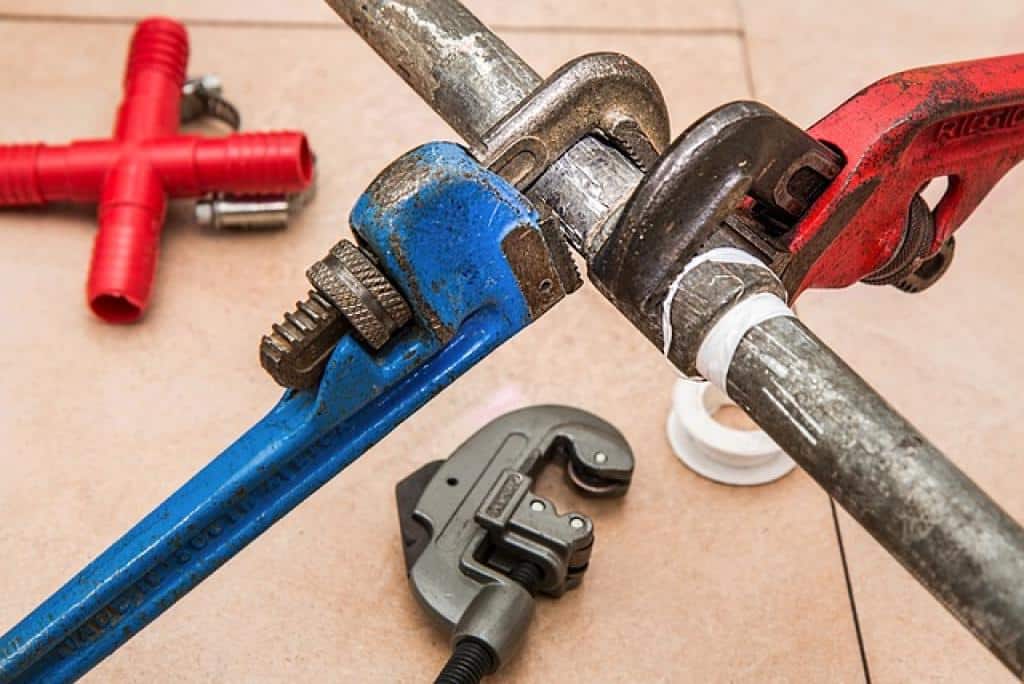Ever found yourself marveling at the array of tools in a hardware store? Or perhaps, spending hours watching DIY home improvement videos, wishing you could dive into that world? Well, guess what? You can! And even better, you can make some cash while you’re at it.
Enter the vibrant world of affiliate marketing within the DIY home improvement sector. This isn’t just about recommending products; it’s about building a community of like-minded individuals passionate about turning their homes into masterpieces.
With a bit of know-how and the right approach, you could be the go-to source for the best tools and tips, and yeah, earn from it too. Let’s dive in and uncover the treasure trove of opportunities awaiting you.
Maximizing Earnings Through Niche Selection
So, you’re fired up and ready to jump into the world of DIY home improvement affiliate marketing. But hold on just a minute. Before you start promoting everything from hammers to high-tech saws, there’s a golden rule to follow: niche selection.
Finding Your Sweet Spot
Choosing the right niche is like finding that perfect pair of jeans. It might take a bit of searching, but when you find it, everything just clicks. In the vast ocean of DIY, it could be anything from vintage furniture restoration to modern minimalist designs. The key is to pick a segment that not only sparks joy for you but is also in high demand.
Attention to Trends
Stay alert to what’s hot in the home improvement world. Sustainability? Smart homes? These aren’t just buzzwords; they’re potential goldmines for affiliate marketers. When you align your niche with what people are excited about, your recommendations feel more like insider tips and less like sales pitches.
Navigating the niche selection process isn’t just about following your passion or the latest trends. It’s about strategically placing yourself in a segment where your content will shine the brightest. It’s about becoming a trusted advisor in a space brimming with opportunity.
By honing in on a specific area, your advice becomes more targeted, your expertise more apparent, and your affiliate links more likely to be clicked. In the end, a carefully selected niche isn’t just good for your audience; it’s the backbone of your affiliate marketing success. So take the time, do the research, and carve out your own little corner of the DIY world. Your future self will thank you.
Understanding Affiliate Programs in the Home Improvement Industry
With our niche firmly in hand, it’s time to dive into the nuts and bolts of affiliate marketing within the home improvement sphere. This is where things start to get really exciting.
Picture this: every time someone clicks on a link from your blog and makes a purchase, you get a slice of the pie. Sounds pretty sweet, right? But there’s a bit to unpack before you start earning those affiliate commissions.
First off, not all affiliate programs are created equal. Some offer a percentage of the sale, while others might offer a fixed amount. It’s like choosing between a buffet or a set menu; it all depends on what works best for your blog’s audience.
Where to Find Affiliate Programs
Now, you might be wondering where to find these magical programs. Well, it’s simpler than you think. Major retailers in the home improvement sector often have their own affiliate programs. Think big names like Home Depot or Lowe’s. Then there are specialized platforms that act as middlemen, connecting bloggers like us to a wide array of affiliate opportunities.
The Fine Print
Before you jump in, let’s talk about the fine print. Understanding the terms and conditions of your chosen affiliate program is crucial. It’s like knowing the rules of the game before you start playing. Pay close attention to commission rates, payment schedules, and any specific guidelines about how you can promote their products. Trust me, you don’t want any surprises down the line.
Joining an affiliate program in the home improvement world is more than just signing up and slapping links on your site. It’s about forming partnerships. You’re essentially aligning your blog’s brand with companies in the industry. This means you’ll want to be selective, choosing brands that resonate with your values and your audience’s needs.
Think of it as a mutual respect thing. By promoting products you genuinely believe in, you’re not just earning commissions; you’re building trust with your readers. This trust is invaluable and ensures your audience comes back time and time again, eager to see what you’ll recommend next.
Alright, now that we’ve got a handle on affiliate programs in the home improvement niche, it’s time to look at turning those recommendations into revenue. But that, my friends, is a topic for another day. Stay tuned!
Choosing the Best DIY Home Improvement Tools to Promote
So, we’ve delved into the world of affiliate programs, right? The next step on this journey is quite thrilling – picking the best DIY tools to shout about on your blog. Let’s dive in.
First things first, it’s crucial to remember who your audience is. Are they complete beginners or seasoned DIY mavens? Understanding this will guide your choices. You wouldn’t recommend a professional-grade table saw to someone who’s just trying to hang up a picture frame, after all.
Know Your Tools
Your credibility is on the line every time you recommend a product. This means you’ve got to do your homework. If you’re suggesting a drill, for example, make sure it’s one that offers value for money, durability, and ease of use. Your recommendations need to be items you’d use yourself or would suggest to a friend without hesitation.
Read the Room
Next, consider the current trends in home improvement. Sustainability is a biggie. More and more homeowners are looking to reduce their carbon footprint. So, promoting eco-friendly tools and materials could really resonate with your audience. Think solar-powered garden lights or energy-efficient power tools. It’s about being in tune with the times.
Another thing to bear in mind is the price point. There’s a delicate balance between quality and affordability. Your aim should be to find products that offer the best of both worlds. This approach helps ensure that the tools you promote are accessible to a wide range of people.
Quality Over Quantity
It can be tempting to sign up for a bunch of affiliate programs and promote as many products as possible. Resist that urge. Quality trumps quantity every time. A few well-chosen tools, promoted with genuine enthusiasm and detailed reviews, will yield better results than a flood of random items.
Engagement is key. Why not create tutorials or how-to guides featuring the tools you’re promoting? Show your audience the incredible things they can accomplish with the right equipment. It’s about sparking inspiration, not just pushing products.
Lastly, keep an eye on feedback. Whether it’s comments on your blog posts or messages on social media, your audience’s opinions can provide invaluable insights. Maybe they’re looking for something you haven’t thought of yet. Openness to their suggestions can lead you to promote tools and products that perfectly match their needs.
And there you have it. Choosing the right DIY home improvement tools to promote is a mix of knowing your audience, staying up to date with trends, focusing on quality, and listening to feedback. Keep these pointers in mind, and you’ll not only boost your affiliate marketing success but also deepen the trust and engagement you have with your readers. On to the next adventure!

Implementing Effective SEO Strategies for Affiliate Marketing
Alright, so you’ve picked the perfect products to promote. Now what? It’s time to get seen, and I’m not just talking about posting and hoping for the best. No, my friends. We’re diving into the world of SEO – Search Engine Optimization. Sound complicated? Don’t sweat it. Let’s break it down into simple steps.
First up, understanding keywords is your golden ticket. Think about what your audience is typing into Google. Are they looking for “best budget-friendly power tools” or maybe “eco-friendly gardening solutions”? By incorporating these keywords into your posts, you’re basically waving a flag at Google, saying, “Hey, look over here!”
Picking the Right Keywords
But don’t just throw keywords around like confetti. It’s about finding that sweet spot where your content naturally aligns with what people are searching for. Use tools like Google’s Keyword Planner to get insights into popular search terms. Then, sprinkle these keywords throughout your content – in headings, in the body, and even in image alt texts.
Quality Content is King
Next, remember that content is king. But not just any content – quality content. Google’s smart, guys. Really smart. It knows when you’re just stuffing keywords without adding real value. Your aim is to solve your reader’s problems, answer their questions, or simply make their day a bit brighter. That way, Google isn’t just a fan of your site; your readers are too.
Another point to note is the importance of backlinks. These are links from other websites to yours. They’re like a vote of confidence in the eyes of search engines. Reach out to other bloggers or websites in your niche. Offer to write guest posts or collaborate in a way that feels genuine and mutually beneficial.
Mobile Optimization is a Must
Let’s not forget about mobile optimization. More people than ever are browsing the web on their phones, and if your site takes ages to load or looks wonky on a smaller screen, that’s not good. Ensure your website is responsive, meaning it adjusts beautifully no matter the device. It’s not just about looks; it’s about providing a seamless experience for your visitors.
Social media also plays a part in this SEO dance. Sharing your content across platforms can drive traffic to your site. It’s also an excellent way to engage with your audience. Just remember to keep the self-promotion in balance with genuine interactions. Nobody likes a constant sales pitch.
In the end, implementing SEO strategies for affiliate marketing is a bit like baking a cake. You need the right mix of ingredients – keywords, quality content, backlinks, mobile optimization, and social media presence. Get this combination right, and you’re all set for success. Sure, it takes time and patience, but the results? Oh, they’re sweet.
Now, go forth and conquer those rankings!
Creating Engaging Content to Drive Affiliate Sales
Moving on, let’s chat about how we can create content that doesn’t just attract eyeballs but also gets your audience reaching for their wallets. Yep, it’s all about engaging content.
First thing’s first, know your audience. Like, really know them. What do they love? What keeps them up at night? When you understand their hopes, fears, and dreams, you can tailor your content to speak directly to them. It’s like having a conversation with a good friend. Authenticity is key here.
Then, let’s talk about storytelling. I know, I know, you’ve heard it a million times. But hear me out. A good story can make a product more than just a thing to buy. It’s an experience, an adventure. Maybe it’s how your running shoes felt on a marathon or the first time you made a perfect latte with a new espresso machine. Stories captivate and connect. They make your reader think, “Hey, I want that experience too.”
Visuals, anyone? It’s no secret that we’re visual creatures. Images, infographics, videos – they can all add that extra zing to your content. They break up text, making your posts more readable, and can often communicate in ways words alone can’t.
Don’t be afraid to get personal, either. Share your own experiences with the products you’re promoting. Honest reviews and personal testimonials are gold. They build trust. And in a world where everyone’s trying to sell something, trust is your best currency.
Engage with your readers, too. Invite them to share their thoughts and experiences. Questions, polls, and surveys can make your audience feel like they’re part of the conversation. Plus, this interaction can give you valuable insights into what they’re really looking for.
Now, consistency is the icing on the cake. You can’t just post once in a blue moon and expect magic. Regular updates keep your audience coming back for more. It also keeps you fresh in their minds.
Creating engaging content to drive affiliate sales is a mix of art and science. It’s about knowing your audience, telling great stories, showcasing striking visuals, sharing personal experiences, engaging in conversation, and doing it all consistently. Follow these steps, and watch as your affiliate marketing game reaches new heights. Here’s to content that not only draws in your audience but also inspires them to take action. Let’s make it happen!
Evaluating the ROI of Affiliate Partnerships in the DIY Tool Niche
Alrighty, let’s dive into something a bit more nitty-gritty. Evaluating the ROI (Return on Investment) of your affiliate partnerships, especially in a cool niche like DIY tools, is a must. Trust me, it’s as important as a level is to a carpenter.
First off, track your sales. This sounds obvious, doesn’t it? But you’d be surprised how many folks skip this step. Each affiliate link should be tracked so you can see exactly where your sales are coming from. This way, you’re not flying blind. You know which products and which content pieces are your golden geese.
Next up, don’t ignore the data. Seriously, data is like the secret sauce to your ROI burger. It tells you not just about sales, but about click-through rates, engagement, and even customer loyalty. Tools like Google Analytics are your best friends here. They help you understand what’s working and, just as importantly, what’s not.
Now, let’s talk about costs. Yes, there are costs involved in affiliate marketing. Whether it’s the time you spend creating content, any direct payments for collaborations, or even the costs of your web hosting and design. All these factor into the ROI equation. Keep a keen eye on your expenditures so you can truly understand your profits.
Evaluate the quality, not just the quantity. Not all sales are created equal. Some products might have higher return rates or lower customer satisfaction. This can affect your brand’s reputation in the long run. So, don’t just celebrate every sale. Take the time to assess the quality of the products you’re promoting and the satisfaction of your customers.
Remember, patience is a virtue. ROI isn’t always immediate, particularly in niches like DIY tools where purchases can be more considered and infrequent. It’s a marathon, not a sprint. Look for trends over time, and adjust your strategy as you learn what works best for your audience.
Leveraging Social Media for Affiliate Marketing Success
So, you’ve got your affiliate marketing strategy down. Fantastic! But wait, there’s more. Social media – it’s not just for cute cat videos and memes, folks. It’s a goldmine for boosting your affiliate marketing efforts. Let’s dig into how you can leverage it to your advantage.
Creating engaging content is your starting point. Think about it. What makes you stop scrolling and take notice? That’s right, content that either solves a problem, entertains, or educates. Blend in your affiliate products naturally. A tutorial on how to use a DIY tool, a before-and-after project post, or even a live Q&A session can work wonders.
Know Your Platforms
Not all social platforms are the same. Instagram and Pinterest are fantastic for visuals, perfect for that stunning before-and-after shot of your latest project. On the other hand, Twitter’s great for quick tips or links to your in-depth blog posts. And let’s not forget YouTube, the go-to for detailed tutorials and product reviews. Tailor your content to fit each platform.
Engagement is key. And I’m not just talking about throwing your affiliate link out into the wild and hoping for the best. I mean really getting into the thick of it – commenting, sharing, and interacting with your followers. The more you engage, the more they’ll trust you. And trust is crucial in converting followers into customers.
Build a Community
Creating a sense of community can really amp up your affiliate marketing efforts on social media. Whether it’s through a Facebook group or an Instagram hashtag, communities bring people together over shared interests – like a love for DIY tools. Offer value, share insights, and keep the conversation going. It’s not just about selling; it’s about building relationships.
Let’s not forget about tracking and analytics. Just like with evaluating your ROI, tracking your social media performance is essential. Use the insights offered by each platform to see what content performs best and when your audience is most active. This data is priceless for refining your strategy and boosting your affiliate marketing success.
The Bottom Line: Succeeding in Affiliate Opportunities for DIY Home Improvement Tools
Wrapping it up, diving into the affiliate marketing world, specifically in the DIY home improvement sphere, can be quite the adventure. And like every good adventure, it comes with its challenges and rewards.
First off, understanding your audience is key. They’re looking for solutions, and you have the opportunity to provide them. Think about the content that resonates best. Is it tutorials, product reviews, or project showcases? Whatever it is, ensure it adds value.
Social media is your best friend in this journey. Use it wisely to showcase your projects, share tips, and offer insights. Remember, each platform has its unique flavor. Tailor your content to match these nuances for maximum impact.
Engagement cannot be overstated. It’s about building relationships, not just pushing sales. Talk to your followers, answer their questions, and be part of the community. Trust is essential in converting interest into sales.
Lastly, let’s talk about consistency. Success in affiliate marketing doesn’t happen overnight. It’s a marathon, not a sprint. Keep at it, refine your strategies based on analytics, and stay true to what your audience loves about your content.
All in all, the DIY home improvement niche is ripe with opportunities for affiliate marketers. With the right approach, a sprinkle of creativity, and a whole lot of engagement, you’re setting yourself up for success. So go ahead, unleash your creativity, and let the world see the value you bring to the table. Who knows? You might just be the next big thing in the DIY home improvement affiliate world.







